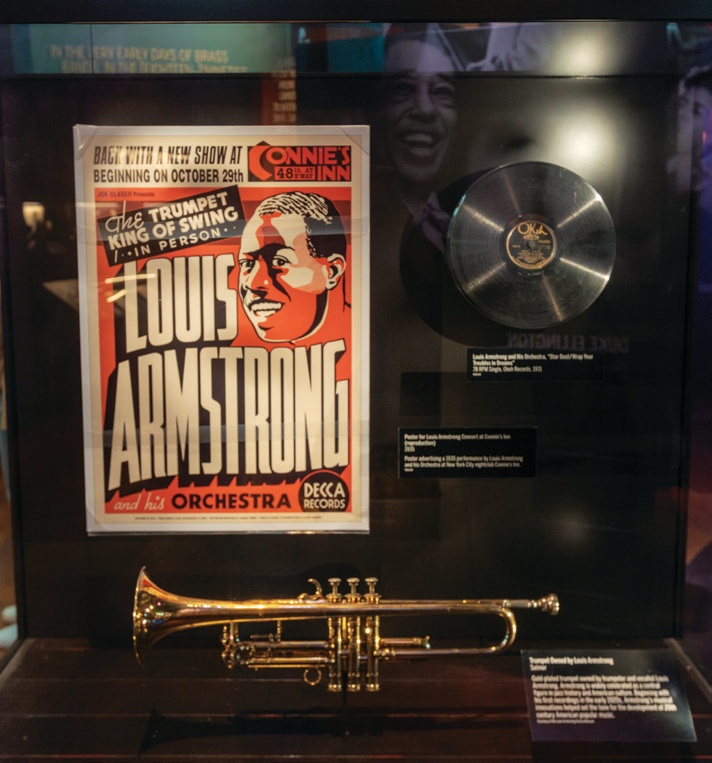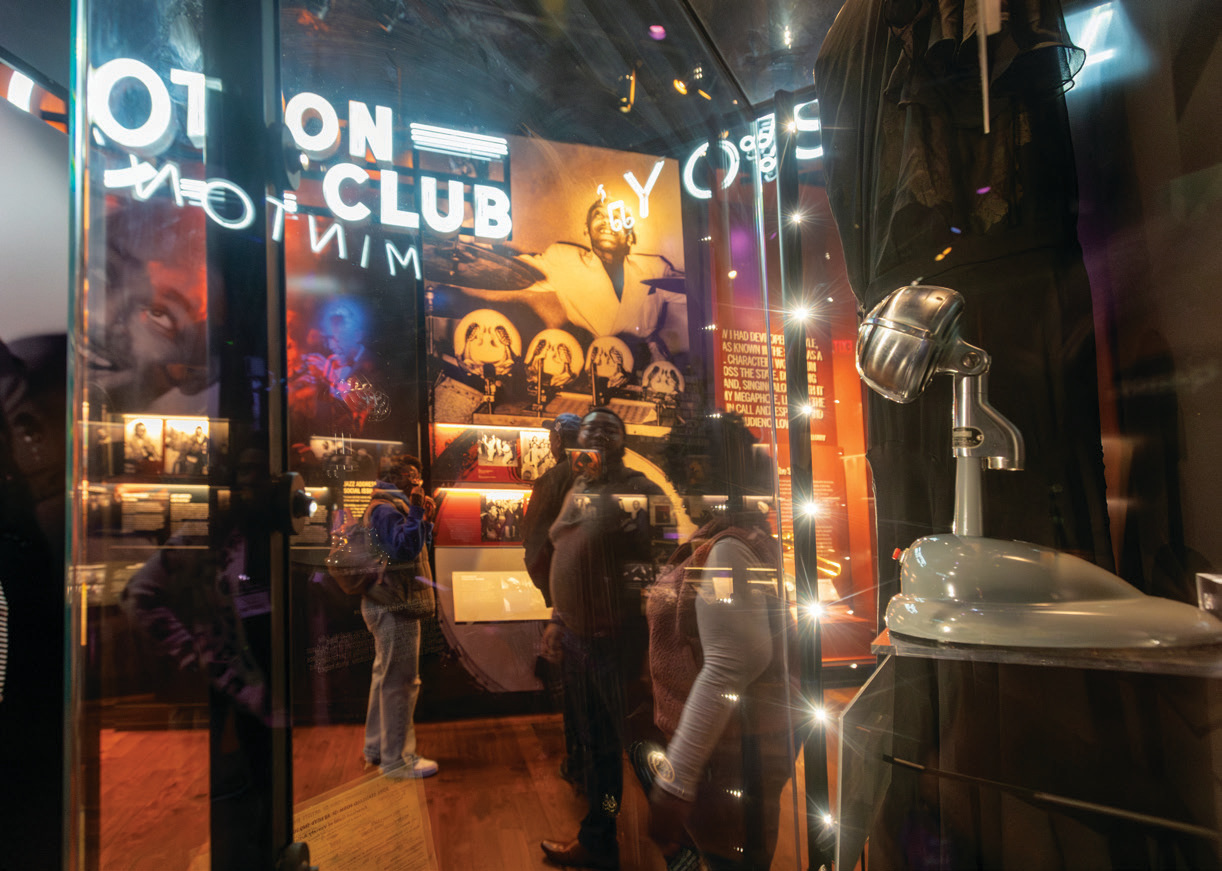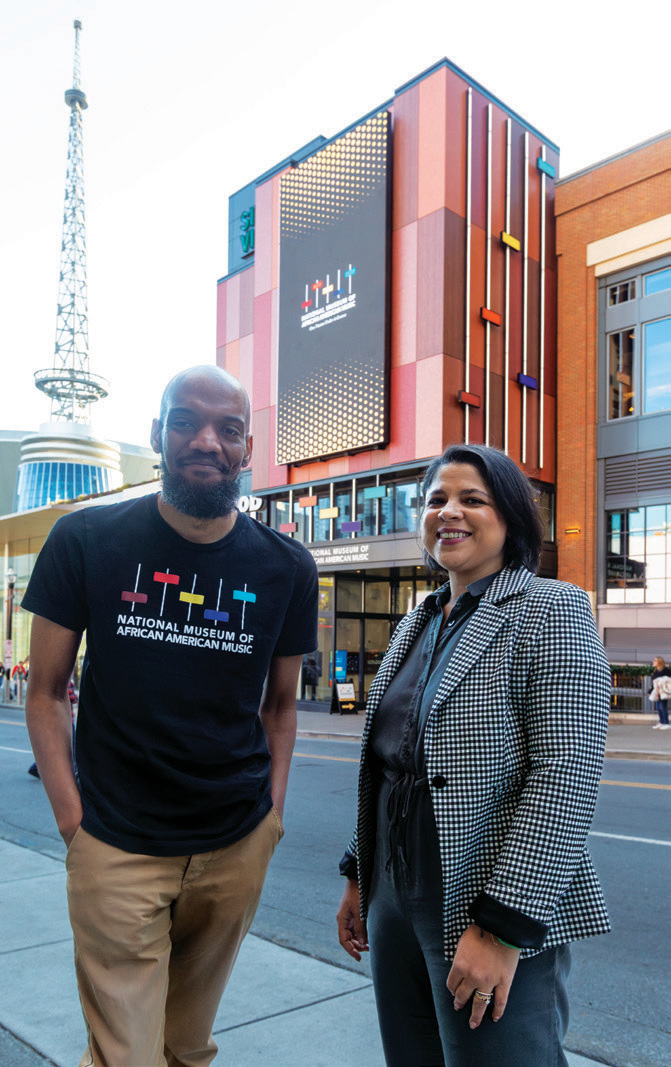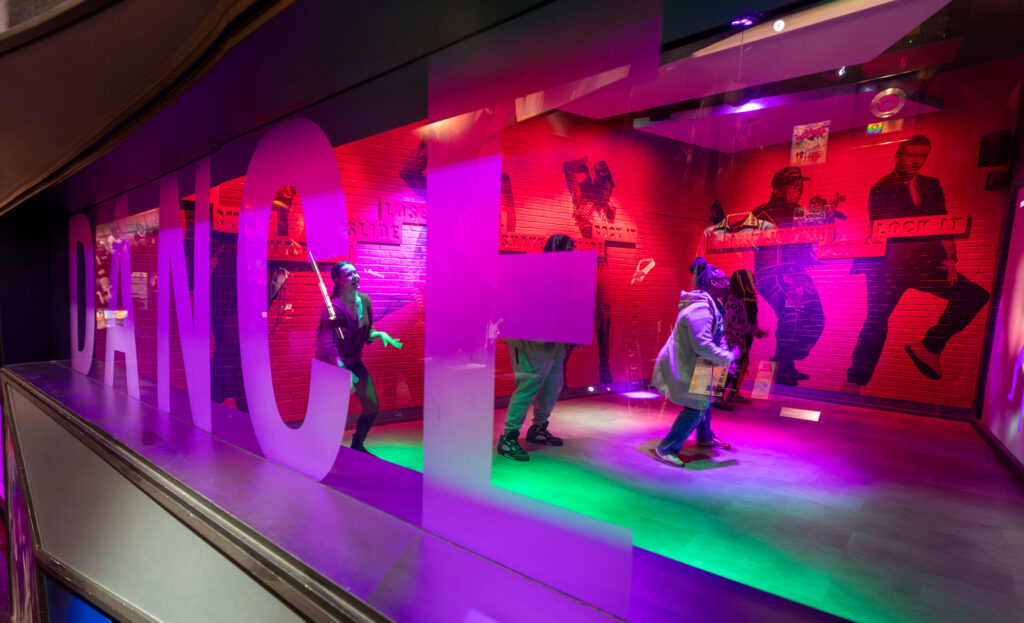“Why Nashville?” In a city full of country music, right across the street from the Ryman Auditorium, sits the National Museum of African American Music. When Noëlle Taylor, director of education and exhibits, talks to a group coming through the museum, she often gets the question, “Why here?” She responds to them, “Why not?”

“We are at an intersection of what was Fifth Avenue (now Rep. John Lewis Way), where the sit-ins happened, and Broadway, where we historically were not acknowledged, where this story was not told, where so many opportunities to really show the brilliance and creativity were not shown because you just weren’t allowed to,” Taylor said.
“And now we’re here in this physical space of that intersection,” Taylor said. “That is a huge statement. As a native Nashvillian, that’s amazing.”
Francis Guess and Dr. T.B. Boyd III had a vision to start the National Museum of African American Music in 1998. The museum opened in 2021. Dr. Boyd and Mr. Guess’s initial reason for creating the museum wasn’t only to celebrate the music that Black artists have created, but it was also about inspiration, said Dr. Bryan Pierce, museum curator with a Ph.D. in heritage studies with an emphasis on museum studies.

Pierce described the museum, in one word, as “inspirational.”
“It is about inspiration, where those initial beginning stages inspire so many people — to Justin Timberlake, to the Bee Gees — and then trying to find those little connections; I think we are just trying to connect the dots,” Pierce said. “You can see the connections from musician to musician, not Black musician to White musician, it’s musician to musician, so it’s all about inspirations.”
Simultaneously, Pierce said that visitors can make and interact with music using the interactive tables; there are three or four interactive tables found in each of the six museum galleries. He hopes the interactive tables inspire people to continue to create even after they leave the museum.
“We’re not focused on just a label; we’re not focused just on one piece of the history or the heritage or the story,” Taylor said. “We are telling a lot of stories at once. You have that opportunity to really involve yourself and have your curiosity piqued.”

Taylor said the museum offers visitors such a personal experience and that everyone’s going to have a different interaction when they go through the galleries.
“Everyone is going to respond completely differently just based on how they connect and what catches them, whether it’s because of their favorite artists or whether it’s because of their favorite songs,” Taylor said. “There’s no way I can prepare you for that.”
For first-time visitors, Taylor said, “Once you know we’re here, you don’t need to call ahead of time. It’s just knowing we’re here and getting here.”
“Come with zero expectations, and be ready to have an experience,” Pierce added. “You’re not going to have the same experience anywhere else in Nashville.”
One last tip for visitors: For an additional $5 fee, there is a Radio Frequency Identification (RFID) bracelet that will allow you to download a playlist or save videos as you come across interactive elements throughout the museum.
Taylor’s one word to describe the museum: “moving.”
“It’s a very moving experience,” Taylor said. “When you come into the lobby, you have no idea what’s going to happen behind those doors.”
Visitors start their museum experience by entering the Roots Theater and viewing a short film. Then they enter the main gallery, called “Rivers of Rhythm Pathways,” which splits off into five more galleries: “Wade in the Water,” “Crossroads,” “A Love Supreme,” “One Nation Under A Groove” and “The Message.”

“They were very intentional when they built the museum about not naming the galleries after genres,” Taylor said. “Each gallery is named after a song title or a lyric, and it alludes to a genre.”
For example, “Wade in the Water” is a gospel song, and “A Love Supreme” is a jazz song.
“I always tell people that each gallery takes a piece of the next, and there’s this back and forth — this tension — between all of the galleries,” Taylor said.
Taylor said there is a Toni Morrison quote that she thinks of when looking at the way the museum galleries are structured.
“You know, they straightened out the Mississippi River in places, to make room for houses and livable acreage,” Morrison said. “Occasionally the river floods these places. ‘Floods’ is the word they use, but, in fact, it is not flooding; it is remembering. Remembering where it used to be. All water has a perfect memory and is forever trying to get back to where it was.”
“I like to think of this museum in terms of that, like we’re just trying to find our way back to where the story was,” Taylor said.
Don’t forget to stop by the lobby case exhibit before you leave! Taylor said it is her favorite part of the museum. The exhibit spotlights Nashvillians and Tennesseans and changes quarterly. The current exhibit honors the founder and curator of the Jefferson Street Sound Museum with “Living Legends: Lorenzo Washington.”

Pierce said the National Museum of African American Music logo represents an equalizer on a mixer.
“The mix is the most important thing when you’re trying to finalize the album, trying to find the balance of how to tell the story and doing it in a way to where it makes sense to every person who comes in,” Pierce said.
“I think, personally, that’s what the mixer means to me,” Pierce said. “As far as with the museum, we’re trying to find a sweet spot as far as telling the story that relates to all people who come through the doors.”
The National Museum of African American Music is around 60,000 square feet and has six galleries. Approximately 400,000 people have visited the museum since its doors opened in 2021.
The first Wednesday of every month is Nissan Free Wednesday, where people can visit the museum for free. February’s Nissan Free Wednesday has extended hours, from 10 a.m. to 8 p.m. (instead of the usual 5 p.m.). Keep an eye on the calendar at nmaam.org for more upcoming events.
The National Museum of African American Music is located at 510 Broadway in Nashville. For more information, visit nmaam.org, email info@nmaam.org or follow @thenmaam on Instagram.



